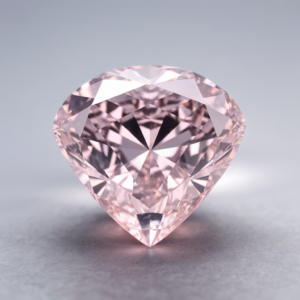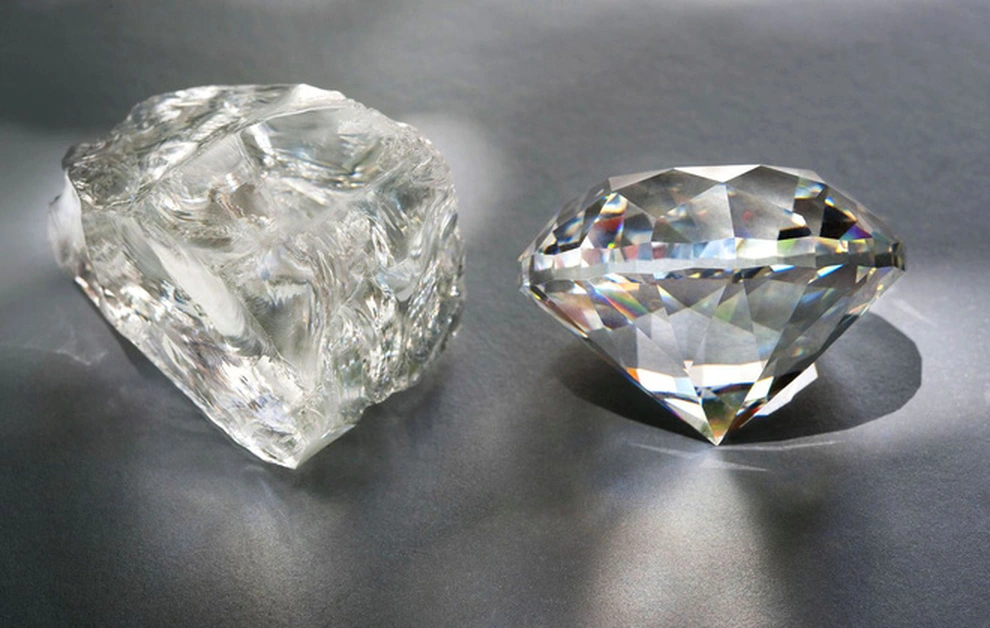It is true that there is no clear difference between a diamond and a brilliant, as both terms refer to the same stone: the diamond. The diamond is the quintessential precious stone, and a brilliant is simply the name given to the most appreciated cut that a diamond can have.
The truth is, there is no difference between a brilliant and a diamond, as both terms refer to the same stone: the diamond. The term “brilliant” comes from “brilliant cut”, meaning that when talking about a brilliant, we refer to the type of cut that the diamond has.
Do you have more questions? In this article, we will delve into the history, technical characteristics, practical differences, and tips for identifying and valuing these unique jewels.
What is a diamond?
A diamond is a gemstone composed of pure carbon that crystallizes in a cubic system. This process occurs in the Earth’s mantle under extreme pressure and temperature conditions, making it one of the oldest and hardest substances on the planet.

Properties of a diamond
- Extreme hardness: It is the hardest known natural material, which means it can scratch any other material but can only be scratched by another diamond.
- Unique brilliance: Its high refractive index (2.42) makes it especially brilliant, reflecting light with great intensity.
- Rarity: Although diamonds are more common than one might think, gem-quality diamonds (clear, large, and free of impurities) are extremely rare.
- Composition: It is made exclusively of carbon, although small traces of other elements can alter its color.
History and symbolism of the diamond
The name “diamond” comes from the Greek “adamas,” meaning “invincible” or “unbreakable.” Since ancient times, it has been a symbol of wealth, power, and eternal love. Its use in engagement rings became popular in the 15th century and remains a widely accepted tradition.
What is a brilliant?
A brilliant is not a different stone from a diamond; it is the name given to the most popular and appreciated cut that a diamond can have. This cut was designed to maximize the diamond’s ability to reflect light and produce exceptional brilliance.
 Origin of the brilliant cut
Origin of the brilliant cut
The modern brilliant cut has its origins in the 17th century when cutters began experimenting with cuts that optimized the play of light within the diamond. In 1919, Marcel Tolkowsky, a Belgian mathematician, developed a theoretical model that perfected the brilliant cut, establishing ideal proportions to maximize brilliance.
Technical characteristics of the brilliant cut
- Round shape: Its circular design is the most sought after in jewelry.
- Number of facets: It generally has 57 or 58 facets (including the culet, the base of the diamond).
- Facet distribution: Includes 33 in the crown (upper part) and 24 in the pavilion (lower part).
- Superior brilliance: The brilliant cut is famous for its ability to reflect almost all the light entering the diamond, creating a “sparkling” effect.
Difference between a diamond and a brilliant
The difference lies in the use of the terms:
- Diamond: Precious stone in its natural state or cut in any shape.
- Brilliant: Specific cut of the diamond designed to maximize brilliance.

Comparison table: Differences between the most common diamond cuts
| Cut | Shape | Facets | Characteristics | Most common use |
|---|---|---|---|---|
| Brilliant | Round | 57-58 | Maximum brilliance, classic and symmetrical design | Engagement rings |
| Princess | Square | 50-58 | Modern lines, high luminosity | Earrings, modern rings |
| Emerald | Rectangular | 50-58 | Enhances clarity, less brilliance but more elegance | Solitaire rings, pendants |
| Oval | Oval | 57 | Similar to the brilliant cut but with a longer shape | Rings, earrings |
| Heart | Heart | 56-58 | Romantic, requires high precision for an ideal finish | Rings, pendants |
Advantages of the brilliant cut
- Maximum light reflection: It is the cut that best optimizes the gem’s brilliance and sparkle.
- Perfect symmetry: Its round and uniform design makes it ideal for all types of jewelry, especially engagement rings.
- Popularity: As the most recognized cut, it is generally easier to sell or appraise.
How to tell if a diamond has a brilliant cut?
If you want to identify a brilliant diamond, pay attention to these aspects:
- Shape: Brilliants are always round and symmetrical.
- Facets: It has 57 or 58 strategically distributed facets.
- Certificates: Check if the jewelry includes an authenticity certificate, such as GIA or IGI, detailing the diamond’s cut.
Why is it important to know this difference when buying jewelry?
Understanding this difference can be crucial when investing in jewelry:
- Correct valuation: The brilliant cut can significantly increase a diamond’s price due to its complexity.
- Avoiding fraud: Some unethical sellers might take advantage of the confusion between the terms to offer lower-quality products.
- Informed choice: Knowing the characteristics of each cut will help you choose jewelry that suits your style and budget.
Conclusions on the differences between brilliant and diamond
At diamantes.com, we want to make it clear that while all brilliants are diamonds, not all diamonds are brilliants. This distinction is crucial when choosing a piece of jewelry, as the type of cut directly affects the appearance, brilliance, and ultimately, the visual impact of the gem. Moreover, although the brilliant cut is highly valued for its ability to enhance the diamond’s light and color, there are other cuts like princess, emerald, and oval that offer different aesthetics and light reflections, providing diverse options to meet each individual’s personal preferences.
Ultimately, at diamantes.com, we urge buyers to consider both the type of diamond and the cut style when making decisions, as both factors play important roles in the beauty and value of the selected jewelry.
If you want to learn more about identifying authentic diamonds, check out our guide: How to Know and Differentiate Between a Diamond and Cubic Zirconia. You can also explore more about diamond colors in our article: Diamond Color Chart: Complete Guide.
Frequently asked questions about diamonds and brilliants
Is a brilliant always a diamond?
Yes, but a diamond is not always cut in the brilliant shape, as it can be cut in other forms such as princess, emerald, or heart.
What makes the brilliant cut special?
Its ability to maximize the diamond’s brilliance, thanks to its facet structure that reflects light spectacularly.
How can I differentiate a brilliant from another diamond cut?
By its round shape and high level of brilliance. Cuts like princess or emerald have more angular or rectangular shapes.
Where can I certify that a diamond has a brilliant cut?
At trusted jewelry stores or with gemologists who issue certificates such as GIA or IGI, detailing the diamond’s cut.




